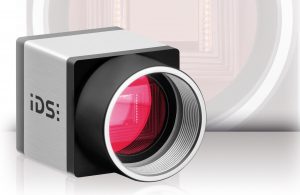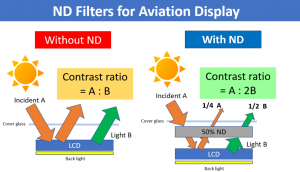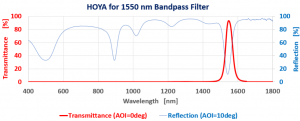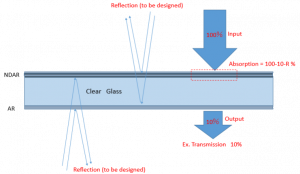HOYA’s optical products are used in many diverse applications across many different industries such as aerospace, biomedical and diagnostic instruments, consumer electronics, semiconductor, telecommunications, automotive, LiDAR, and other optics and photonics applications. Below find some examples. Please contact us to discuss your specific application.
High Quality AR Coatings and UV/IR Cut Filters for Machine Vision Cameras
 HOYA is one of the largest supplier of high quality AR coatings and UV/IR cut filters for machine vision cameras. We have many well-known camera manufacturers as customers and help them providing cameras with excellent optical and spectral properties to their clients. Read more how we work together with IDS Imaging Development Systems GmbH to ensure the filters have the right quality for them and their customers’ applications.
HOYA is one of the largest supplier of high quality AR coatings and UV/IR cut filters for machine vision cameras. We have many well-known camera manufacturers as customers and help them providing cameras with excellent optical and spectral properties to their clients. Read more how we work together with IDS Imaging Development Systems GmbH to ensure the filters have the right quality for them and their customers’ applications.
ND Filters for Contrast Enhancement of LCD and CRT Panels for Aviation

Reflected sunlight is an omnipresent hazard to pilots during daylight hours, hindering their ability to read cockpit instrumentation and displays, particularly at cruising altitudes above the clouds. This reduced instrument visibility impairs operational safety by delaying or preventing pilots from accessing important information on cockpit displays.
A number of techniques have been attempted to address this problem, from pilots simply shielding the display with a hand or wearing sunglasses to attaching a cover to the display to shield the screen. These workarounds create as many unsafe environments and situations as they prevent, and they do not correct the root problem: the presence of the external light directly striking and reflecting off the display. Read more in our white paper…
LiDAR — Optical Filters For 1550 nm Light Sources In Sensing Applications

The 905 nm wavelength band initially made great sense for use in autonomous vehicle light detection and ranging (LiDAR) systems. Pulsed diode laser emitters and detectors operating at 905 nm already were ubiquitous in other applications, meaning they had proven reliability, could be procured at relatively low cost, and were available from established supply chains. Moreover, engineers’ familiarity with working at 905 nm wavelength range ensured few surprises awaited them.
However, the 905 nm band exhibits shortcomings in LiDAR applications. First, the human eye transmits 905 nm light to the retina, triggering emission power limitations imposed by various safety regulations, including 21 CFR 1040 in the United States and IEC 60825 internationally. Second, the low-output energy characteristic of the 905 nm band creates challenges in reflected light. Namely, other sources of high or ambient light can reduce the overall signal achievable when operating at 905 nm. Read more in our white paper…
AR Coated Neutral Density Filters
 Neutral density (ND) filters are used across numerous applications to facilitate constant attenuation across a range of wavelengths. For example, systems where reflected light has a negative effect on performance — such as imaging systems that require very low transmittance (e.g., 0.01% or less) — require the use of ND filters. “Standard” ND filters generally are made of coloured glass, while coated ND filters are available for deposition onto a variety of substrates, including glass and plastics/resins.
Neutral density (ND) filters are used across numerous applications to facilitate constant attenuation across a range of wavelengths. For example, systems where reflected light has a negative effect on performance — such as imaging systems that require very low transmittance (e.g., 0.01% or less) — require the use of ND filters. “Standard” ND filters generally are made of coloured glass, while coated ND filters are available for deposition onto a variety of substrates, including glass and plastics/resins.
An understanding of the types of ND filters available, as well as their specific benefits or shortcomings, is critical to organisations designing an optical assembly within a limited space. This article examines the pros and cons, as well as suitable applications, for both coloured glass ND filters and coated ND filters. It also introduces NDAR (neutral density, anti-reflective) filters from HOYA as a solution for designers who need to optically suppress reflections from the filter surface, as well as achieve mechanical requirements with uncompromising thickness specifications. Read more in our white paper…






